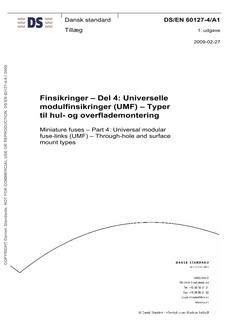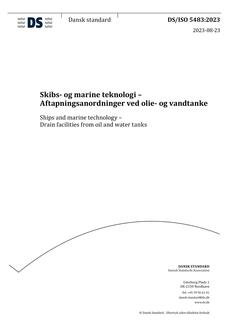-
-
Available Formats
- Availability
- Priced From ( in USD )
-
Available Formats
-
- Immediate download
- $35.00
- Add to Cart
-
- Printed Edition
- Ships in 1-2 business days
- $35.00
- Add to Cart
Customers Who Bought This Also Bought
-

DANSK DS/EN 45552
Priced From $75.00 -

DANSK DS/EN 60127-4
Priced From $154.00 -

DANSK DS/EN 13888-2
Priced From $64.00 -

DANSK DS/ISO 5483
Priced From $90.00
About This Item
Full Description
This technical report provides guidelines concerning single-mode fibre inter-compatibility. A given Category of single-mode fibre, for example B-655, may have different implementations by suitably optimising several of the following parameters: mode field diameter (hence effective area), chromatic dispersion coefficient, slope of the chromatic dispersion curve, cable cut-off wavelength. These guidelines indicate the items that should be taken into account when planning to connect: (1) different implementations of single-mode fibres of the same Category, e.g. different implementations of Class B single-mode fibres, and (2) single-mode fibres of different Sub categories, e.g. B-652.B with B-655.C. See IEC 60793-2-50 for the attributes and definitions of single-mode fibre. The attributes and definitions of fibres covered in this technical report are given in Table 1. Table 1 – Correspondence table of various single-mode fibres me Use (IEC 60793-2-50) IEC Common name Use (IEC 6079-2-50) IEC Sub- Category ITU-T Recommendation Dispersion unshifted Optimised for use in the 1 310 nm region but can be used in the 1 550 nm region B-652.B G.652.B Extended band dispersion unshifted Optimised for use in the 1 310 nm region but can be used in the O, E, S, C and L-band (i.e. throughout the 1 260 nm to 1 625 nm range). B-652.D G.652.D Dispersion shifted Optimised for single channel transmission in the 1 550 nm region. Multiple channels can only be transmitted if care is taken to avoid nonlinear effects such as four wave mixing by, for example, moderating the power levels or appropriate spacing or placement of the channels B-653.A G.653.A B-653.B G.653.B Cut-off shifted Optimised for low loss in the 1 550 nm region, with cut off wavelength shifted above the 1 310 nm region B-654.A G.654.A B-654.B G.654.B B-654.C G.654.C B-654.D G.654.D B-654.E G.654.E Non-zero dispersionshifted fibre Optimised for multiple channel transmission in the 1 530 to 1 625 nm region with a positive or negative, non-zero chromatic dispersion and a cut off wavelength that may be shifted above the 1 310 nm region B-655.C G.655.C B-655.D G.655.D B-655.E G.655.E Wideband non-zero dispersion-shifted fibre Optimised for multiple channel transmission in the wavelength range of 1 460 to 1 625 nm with the positive value of the chromatic dispersion coefficient that is greater than some non-zero value over the same wavelength range. B-656 G.656 Bending loss insensitive fibre Bending loss insensitive single-mode fibre suitable for use in the access networks, including inside buildings at the end of these networks. They are suitable to be used in the O, E, S, C and L-band (i.e. throughout the 1 260 nm to 1 625 nm range) and ,in the case of B-657.A1 B-657.A1 G.657.A1 B-657.A2 G.657.A2 B-657.B2 G.657.B2 B-657.B3 G.657.B3 Common name Use (IEC 6079-2-50) IEC Sub- Category ITU-T Recommendation and B-657.A2 meet the requirements of B- 652.D fibres. This document does not consider the connection of fibres with the same category from different manufacturers, which is already considered by the standardisation procedure.





